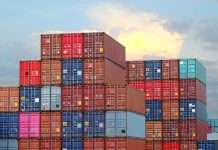 Governor Gavin Newsom announced last week actions the state will take to ease port congestion that are consistent with some of the requests outlined by the California Chamber of Commerce in its letter to the Governor and members of the California Legislature. CalChamber applauds the Governor for building on earlier efforts this year to ease supply chain issues, but even more must be done to address the unprecedented backlog at the ports.
Governor Gavin Newsom announced last week actions the state will take to ease port congestion that are consistent with some of the requests outlined by the California Chamber of Commerce in its letter to the Governor and members of the California Legislature. CalChamber applauds the Governor for building on earlier efforts this year to ease supply chain issues, but even more must be done to address the unprecedented backlog at the ports.
CalChamber Requests Weight Exemptions to Facilitate Maximum Port-to-Rail Routes
The Governor announced that the California Department of Transportation (CalTrans) will begin issuing temporary permits starting November 19, 2021 through June 30, 2022 that will increase weight limits for trucks carrying goods in and out of its ports from 80,000 pounds to 88,000 pounds. The increase in weight limit should help to streamline the movement of more containers from cargo ships. The increased truck weight limit applies to California’s entire state highway system, including interstate routes, for moves between ports and distribution centers in California. Cities and counties are also authorized to issue their own temporary weight permits for truck travel on local roads.
CalChamber Requests Streamlining Onboarding of Additional Truck Drivers
The Governor announced on November 10, 2021 that the Department of Motor Vehicles (DMV) will expand hours for commercial truck driver license examinations and offer Saturday commercial driving test appointments at three key offices—Fullerton, Montebello and Winnetka—bringing the total number of Saturday test sites to 15. These changes are intended to increase the number of licensed truck drivers in California by doubling the state’s capacity to conduct commercial driving tests from 5,000 commercial driving tests per month to 9,700 tests per month. While increased testing capacity is not a silver bullet, CalChamber agrees that training more truck drivers will help to ease congestion over time.
Additional Actions Needed
The Governor announced his administration is working on identifying property to temporarily store containers—an effort CalChamber supports. The state needs to expeditiously identify surplus properties and evaluate how to overcome barriers that will slow their temporary use for storing containers, such as the California Environmental Quality Act (CEQA) and land use variance approvals.
The state should identify policy and/or financial mechanisms to encourage streamlining of entitlements or permits and remove unnecessary land use restrictions for the temporary use of sites to offload containers. New storage sites will serve as critically needed return depots to free up truck chassis space in order to move even more imports off dock. Establishing clear timelines for the use of each property will be helpful in allowing companies to plan for the medium- and long-term staging needs.
Finally, the administration needs to begin accelerating regulatory approval for testing and deploying autonomous commercial trucking and aligning electrification timelines with automation upgrades to ensure ports operate more efficiently using best available technology.
CalChamber appreciates the opportunity to continue engaging stakeholders, the administration and legislators on this critically important issue.
Staff Contact: Adam Regele


